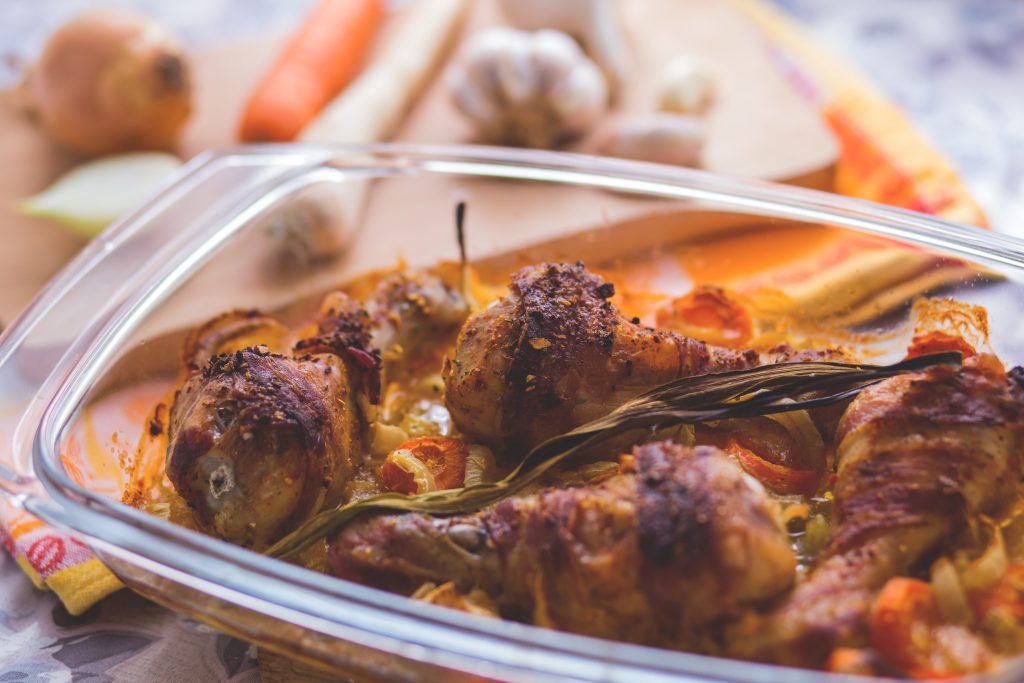Comparing Boneless Vs Bone-In Wings
Taste and Texture
In the realm of culinary delights, chicken wings reign supreme, charming taste buds and igniting cravings. Among the myriad of wing variations, the debate between boneless and bone-in wings rages on, each claiming its personal distinctive benefits.
Boneless wings, usually produced from chicken breasts which are breaded and deep-fried, current a compelling case for ease of consumption. Their lack of bones eliminates the effort of navigating by way of a bony framework, making them significantly interesting for casual dining and finger foods. The clean, tender texture of boneless wings permits for easy bites, excellent for these who prefer a clear and easy eating expertise.

However, some fanatics argue that boneless wings lack the characteristic juiciness and taste depth of their bone-in counterparts. The presence of bone in bone-in wings contributes to a extra flavorful and tender meat, because the bone helps retain moisture and enhance the general taste profile.
Beyond style, texture performs an important role in the enjoyment of wings. Boneless wings are probably to have a softer, extra uniform texture, whereas bone-in wings supply a contrasting expertise with their crispy pores and skin and tender, barely chewy meat. The interaction of textures adds a component of complexity and satisfaction to the eating experience.
When it involves taste, both boneless and bone-in wings may be seasoned and sauced to perfection. From traditional Buffalo wings to spicy Korean flavors, the probabilities are endless. However, some argue that the porous nature of bone-in wings allows for deeper flavor penetration, resulting in a more intense and satisfying taste profile.
Ultimately, the choice between boneless and bone-in wings boils down to private desire. Those in search of a handy and hassle-free experience may discover solace in boneless wings, whereas those who prioritize taste and texture might gravitate in direction of bone-in wings. Regardless of the selection, the joy of indulging in these delectable poultry creations remains fixed.
When it comes to wings, the age-old debate of boneless vs. bone-in rages on. While boneless wings provide comfort and a clear consuming expertise, bone-in wings reign supreme by means of taste and texture. The presence of the bone acts as a pure flavor conductor, allowing the juices to penetrate deeper into the meat, resulting in a extra intense and savory taste.

The bone also performs a vital role in the texture of the wings. As the meat cooks, it naturally shrinks away from the bone, making a crispy and tender chunk. This interaction of textures, with the crispy skin giving way to succulent and juicy meat, is a true delight for the senses. The bone additionally offers a natural barrier, stopping the meat from becoming overcooked and dry, ensuring a extra consistent and enjoyable eating expertise.
Furthermore, bone-in wings provide a more satisfying and interactive consuming expertise. The act of selecting at the bone, separating the meat from the cartilage, and savoring each bite is a primal and gratifying experience that provides to the overall enjoyment of the meal. This tactile engagement enhances the flavour notion and makes the expertise more memorable.
In conclusion, while boneless wings may be convenient, bone-in wings offer a superior style and texture expertise. The presence of the bone acts as a natural flavor enhancer, making a extra intense and savory taste, while also ensuring a crispy and tender texture. The interactive nature of consuming bone-in wings adds to the overall enjoyment and makes for a extra satisfying culinary expertise.
While boneless wings could additionally be suitable for a fast and simple meal, for those in search of a very flavorful and satisfying wing expertise, bone-in wings are the clear alternative.
Nutritional Value
While boneless wings may look like a more healthy alternative because of their smaller measurement, the nutritional value can really be similar to bone-in wings, relying on preparation methods.
Both forms of wings contain related quantities of protein, but bone-in wings are likely to have slightly extra fat, which is especially as a outcome of pores and skin.
The skin on bone-in wings accommodates a significant amount of saturated fats, which can contribute to heart disease.
However, the skin additionally provides taste and crispiness, so eradicating it can lead to a much less satisfying expertise.
When it comes to calories, boneless wings can generally be larger in energy as a outcome of their breading or batter.
Bone-in wings, particularly when baked or grilled, can be a lower-calorie option.
The nutritional value of each types of wings can range depending on the cooking method.
Deep-fried wings, regardless of whether they’re boneless or bone-in, tend to be greater in fat and energy because of the absorption of oil during cooking.
Baked or grilled wings are usually thought-about more healthy options, as they require much less fats for cooking.
Ultimately, the choice between boneless and bone-in wings comes down to personal choice.
If you’re concerned about fat and calories, choosing bone-in wings without the skin and selecting a more healthy cooking technique like baking or grilling could be a good technique.
However, if you enjoy the convenience and flavor of boneless wings, be mindful of the breading and choose a restaurant that makes use of lighter breading options.
Remember to at all times take note of the nutritional information offered by the restaurant or on meals labels to make knowledgeable selections that fit your dietary needs and preferences.
Boneless wings are usually created from the breast meat of the chicken, while bone-in wings are produced from the wing sections of the chicken, including the drummette and the wingette. This difference in reduce leads to significant variations in dietary value.
Nutritional Value of Boneless Wings:
- Boneless wings are often greater in energy and fats than bone-in wings as a end result of inclusion of skin, which is a rich source of fat.
- They are additionally sometimes lower in protein than bone-in wings, as breast meat is mostly leaner than wing meat.
- Boneless wings could also be higher in sodium, as they usually include added flavoring agents and preservatives.
- However, boneless wings could be a good source of vitamin B12, which is crucial for cell development and improvement.
Nutritional Value of Bone-In Wings:
- Bone-in wings are typically decrease in energy and fat than boneless wings, particularly if the pores and skin is removed earlier than cooking.
- They are typically larger in protein, as wing meat incorporates extra connective tissue and muscle fibers than breast meat.
- Bone-in wings is normally a good supply of calcium and phosphorus, which are important for bone health.
- They are additionally a supply of iron, which is important for oxygen transport in the body.
Choosing the Right Option:
The selection between boneless and bone-in wings is decided by individual preferences and dietary needs. For those seeking a lower-calorie, higher-protein possibility, bone-in wings are a better choice. However, for these who choose comfort or a extra flavorful expertise, boneless wings may be extra interesting.
Cost
Boneless wings, usually produced from chicken breast meat, are typically cheaper than bone-in wings. This is because chicken breast meat is less expensive than chicken drumsticks and wings.
However, the price of boneless wings can range depending on the restaurant or grocery store. Some locations could charge a premium for boneless wings, whereas others may supply them at a lower cost than bone-in wings.
Ultimately, the value of boneless wings will depend on the particular institution and the price of chicken breast meat in your space.
Here are some elements that can have an effect on the cost of boneless wings:
• The price of chicken breast meat: As mentioned earlier, chicken breast meat is generally cheaper than chicken drumsticks and wings. However, the worth of chicken breast meat can fluctuate relying on elements such as supply and demand.
• The restaurant’s pricing technique: Some restaurants might select to cost a premium for boneless wings, while others might supply them at a cheaper price than bone-in wings.
• The size and weight of the wings: Larger boneless wings will usually cost greater than smaller ones.
• The sort of sauce or seasoning: Some sauces and seasonings could additionally be costlier than others.
• The location: Boneless wings may be costlier in areas with a higher cost of living.
It is important to notice that while boneless wings may be cheaper than bone-in wings, they might not all the time be one of the best worth on your money. This is as a outcome of boneless wings typically comprise less meat than bone-in wings.
If you may be in search of a cheap option, it is worth comparing the value per pound of boneless wings to the price per pound of bone-in wings.
When it comes to chicken wings, there’s a basic debate: bone-in vs. boneless. While boneless wings might appear to be the extra handy possibility, bone-in wings often win out when it comes to flavor and texture.
The greatest factor in choosing bone-in wings is their superior flavor. The bone helps to keep the chicken moist and tender during cooking, leading to a juicier and extra flavorful wing. The cartilage and bone additionally contribute to the general richness of the flavor. Boneless wings, however, can sometimes be dry and lack the depth of taste that bone-in wings offer.

Another benefit of bone-in wings is their texture. The crispy skin and juicy meat create a satisfying distinction that is exhausting to duplicate with boneless wings. The bone also adds a little bit of resistance when you chunk into the wing, which can enhance the eating experience.
However, bone-in wings do have some drawbacks. They can be more time-consuming to eat and require a bit more effort to remove the meat from the bone. This could be a drawback if you’re looking for a quick and simple meal.
When it comes to value, bone-in wings are typically cheaper than boneless wings. This is because boneless wings are processed and require extra labor to produce.
Ultimately, the choice of whether to go with bone-in or boneless wings comes down to personal choice. If you’re in search of the most flavorful and textured wings, bone-in is the finest way to go. However, if you’re looking for comfort and a fast meal, boneless wings could be a higher option.
Cooking
When it comes to chicken wings, the everlasting debate rages on: boneless vs. bone-in. Both supply distinct advantages and downsides, ultimately making the selection a matter of private preference.
Boneless wings:
- Pros:
- Easier to eat: No bones to navigate, making them good for messy eaters and children.
- Convenient: Quick and simple to cook dinner, requiring less effort and time.
- Versatility: More adaptable for numerous preparations, such as grilling, baking, and frying.
- Cons:
- Less flavorful: Often made from chicken breast meat, which may be drier and fewer flavorful than darkish meat.
- Texture: Can be mushy or rubbery if overcooked.
- Processed: May include added fillers or binders, affecting the overall style.
Bone-in wings:
- Pros:
- Flavorful: Dark meat offers a richer and more intense flavor.
- Crispy pores and skin: The bone helps keep a crispy exterior.
- Juicy: The bone retains moisture, making certain tender and juicy meat.
- Cons:
- Messy: Requires extra effort to eat, as you want to navigate the bones.
- Time-consuming: Takes longer to cook, particularly when aiming for crispy pores and skin.
- Less versatile: Less adaptable to sure preparations, like grilling.
Ultimately, the best choice is decided by your priorities. If you are looking for a fast and easy possibility, boneless wings will be the way to go. But if you crave the true taste and texture of a traditional chicken wing, bone-in wings will fulfill your cravings.
Consider your private preferences, culinary skills, and the event when deciding between boneless and bone-in wings. Whichever you choose, enjoy the deliciousness of this basic appetizer!
When it involves chicken wings, there is a classic debate: boneless vs. bone-in. Both have their deserves, and the choice in the end boils down to personal choice and cooking fashion.
Boneless wings, basically chicken tenders formed like wings, supply convenience and ease of eating. They are often pre-breaded and require less cooking time, making them a well-liked selection for quick meals or parties.
However, bone-in wings are sometimes thought-about the “true” wing experience. The bone supplies a flavorful base for the meat to cook in opposition to, resulting in a extra intense taste and tender texture.
The bone additionally acts as a pure “skewer,” helping to carry the wing together and forestall it from falling apart throughout cooking. This makes bone-in wings ideal for grilling, smoking, or deep-frying, where they will achieve a crispy, juicy, and flavorful finish.
On the other hand, boneless wings could be a bit bland and lack the textural contrast that bone-in wings provide. They can be susceptible to turning into dry and difficult if overcooked.
In terms of cooking, bone-in wings require an extended cooking time and is usually a bit more challenging to deal with, particularly for newbies. They additionally produce extra mess with the bones and require additional time for cleanup.
Boneless wings, however, are much easier to handle and prepare dinner, and so they supply less mess. They are additionally available pre-breaded, making them a convenient choice for busy weeknights.
Ultimately, the selection between boneless and bone-in wings comes right down to your private preference and cooking fashion. If you prioritize convenience and ease of eating, boneless wings are a fantastic possibility. But should you’re in search of a extra genuine and flavorful expertise, bone-in wings are the way to go.
Convenience
In the world of chicken wings, there is a heated debate: boneless vs bone-in. While both provide distinct advantages, boneless wings have gained immense recognition for their comfort and accessibility.
Convenience is the secret with boneless wings. They get rid of the effort of wrestling with bones and gnawing via cartilage. This makes them perfect for informal gatherings, family meals, and even solo indulgences. Simply seize a wing, dip it in your favourite sauce, and luxuriate in.
Boneless wings are often praised for their ease of consumption. You can devour them with out the mess and discomfort associated with bone-in wings. This makes them a preferred selection for kids and those that might discover bone-in wings challenging to eat.
Boneless wings are extremely versatile. They may be grilled, baked, fried, and even air-Fried Chicken Wings Recipe. Their shape lends itself properly to completely different cooking strategies, making them a versatile addition to any meal.
One of the biggest drawbacks of boneless wings is their composition. While they are usually labeled as “wings,” they’re typically made from chicken breasts which have been cut into wing-shaped pieces. This means that they lack the distinctive taste and texture of true chicken wings.
The meat in boneless wings could be drier than bone-in wings. This is because the chicken breasts used to make them are usually leaner than the dark meat found in bone-in wings.
Boneless wings are additionally often criticized for being much less flavorful than their bone-in counterparts. The absence of cartilage and bone can end result in a less robust flavor profile.
The debate between boneless and bone-in wings is in the end a matter of private desire. While boneless wings provide convenience and ease of consumption, they may lack the depth of taste and texture present in bone-in wings. For many, the enjoyment of consuming a bone-in wing, with its succulent meat and crispy skin, is an experience that can’t be replicated with boneless wings.
In the realm of chicken wing fanatics, a timeless debate rages on: boneless vs. bone-in. While both choices offer their own unique advantages, it is essential to understand the nuances of each to make an informed choice.
Bone-in wings, the standard choice, boast a definite advantage when it comes to taste and texture. The bones act as a pure conductor of warmth, ensuring the meat cooks evenly and develops a crispy, succulent exterior. This ends in a extra intense chicken flavor, typically enhanced by the presence of cartilage and connective tissues.
Here’s a breakdown of the professionals and cons of bone-in wings:
Pros:
Intense chicken flavor
Crispy, succulent texture
More satisfying to eat (for some)
Cons:
Messy to eat
Can be more challenging to sauce properly
Less meat per wing
Boneless wings, on the opposite hand, supply a more convenient and streamlined consuming experience. They are sometimes produced from chicken breasts, that are then shaped and breaded to resemble wings. While they could lack the identical depth of taste as bone-in wings, they supply a bigger portion of meat and are simpler to deal with.
Here’s a breakdown of the professionals and cons of boneless wings:
Pros:
More convenient to eat
More meat per wing
Easier to sauce evenly
Cons:
Less intense chicken flavor
Texture could be much less satisfying
May be produced from chicken breast, which can be dry if overcooked
Ultimately, the choice between boneless and bone-in wings boils down to non-public desire. If you’re seeking a more conventional, flavor-forward expertise, bone-in wings are the means in which to go. But if comfort and a bigger portion of meat are your priorities, boneless wings may be a greater match.
